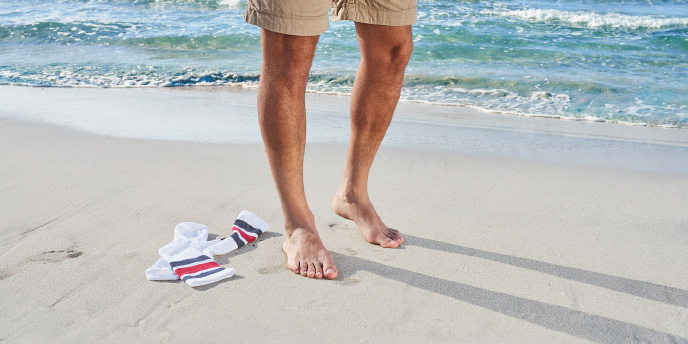Learning scenario
A customer has identified that they have a fungal nail infection. You check and confirm that this is the case and that they are suitable to use Curanail 5% Fungal Nail Treatment.

Now consider:
What would be the appropriate advice on using this product?
For example, how to apply the nail lacquer.
How would you manage expectations? When should the customer expect to see an improvement?
What self-care advice can you offer? For example, ensuring shoes are well-dried before wearing them again (e.g. running trainers, which may be damp with sweat), or wearing flip flops in communal areas in the gym/swimming pool.
Now you have completed this module, proceed to the next screen to test your knowledge and record your learning.
Additional resources
 Download booklet:
Download booklet:Identifying and treating fungal nail infections
References
1. https://www.medicines.org.uk/emc/product/9436/
2. https://cks.nice.org.uk/fungal-nail-infection
All references last accessed May 2020
Curanail 5% w/v Medicated Nail Lacquer (UK)
Presentation: Medicated nail lacquer containing 5% w/v amorolfine. Indications: Mild distal and lateral subungual onychomycoses caused by dermatophytes, yeasts and moulds limited to up to 2 nails. Dosage and Administration: Adults Only – Apply to the affected finger or toe nails once weekly (see summary of product characteristics for full technique). Cosmetic nail lacquer may be applied 10 min after Curanail application. Treatment duration depends on intensity and localisation of infection. Generally, six months (finger nails) and nine to twelve months (toe nails). Not recommended for use in patients below the age of 18 years. Contra-Indications: Hypersensitivity to any of the ingredients. Precautions and Warnings: Curanail should not be applied on the skin around the nail. Avoid contact with eyes, ears and mucous membranes. Patients with predisposing conditions such as peripheral circulatory disorders, diabetes mellitus and immunosuppression should be referred to a doctor. Patients with nail dystrophy and destroyed nail plate should also be referred to a doctor. When using organic solvents impermeable gloves should be worn. In case of a systemic or local allergic reaction, the product should be stopped immediately, and medical advice should be sought. Remove the product and do not reapply. Pregnancy and Lactation: Should not be used during pregnancy and/or lactation. Side Effects: Adverse drug reactions are rare. Nail disorders (e.g. nail discoloration, broken nails, brittle nails) may occur. These reactions can also be linked to the onychomycosis itself. Rare (≥ 1/10000, < 1/1000) adverse drug reactions include: nail disorder, nail discoloration, onychoclasis (broken nails), onychorrhexis (brittle nails). Very rare (< 1/10000) reactions include: skin burning sensation. Adverse reactions with an unknown frequency include: Hypersensitivity (systemic allergic reaction), erythema, pruritus, contact dermatitis, urticaria, blisters. Packaging Quantity and Cost (RRP): 3ml RRP: £29.99 MA number: PL 10590/0049 Legal Category: GSL Marketing Authorisation Holder: Galderma (UK) Limited, Meridien House, 69-71 Clarendon Road, Watford, Hertfordshire, WD17 1DS. United Kingdom. Tel: +44 (0) 1923 208 950 Date of Revision: April 2020
Adverse events should be reported. Reporting forms and information can be found at
www.mhra.gov.uk/yellowcard.
Adverse events should also be reported to Galderma (UK) Ltd at medinfo.uk@galderma.com or +44(0)1923 208950.
